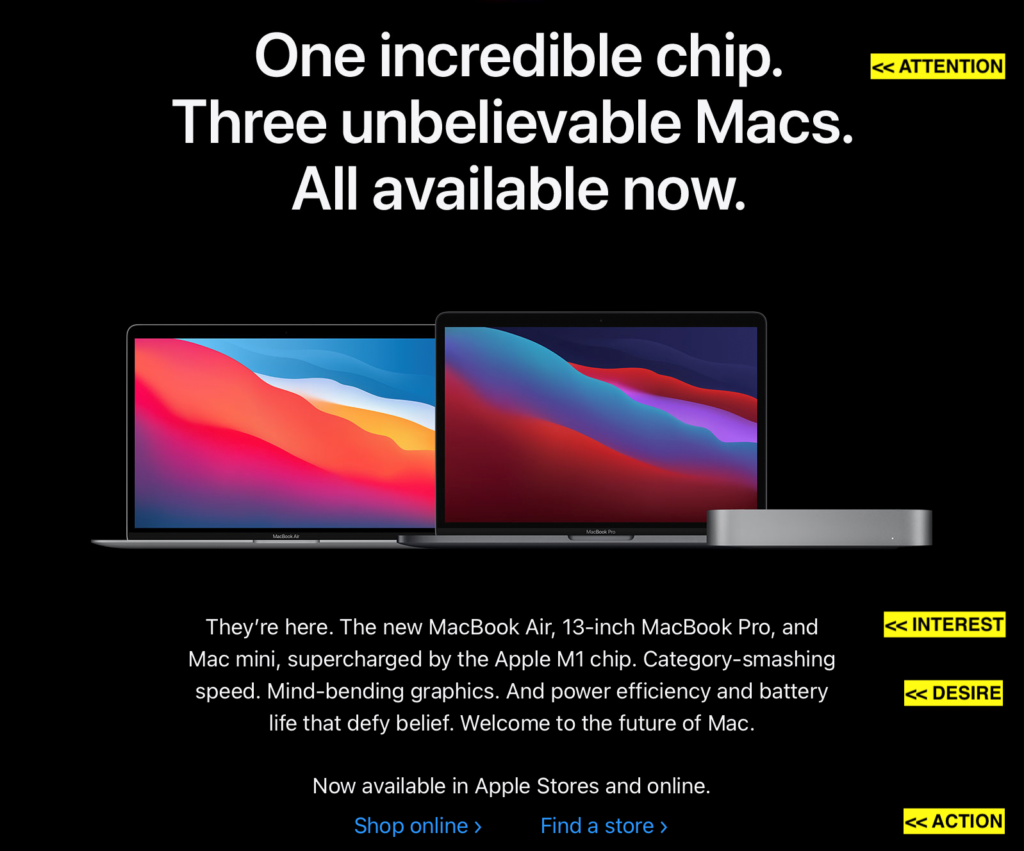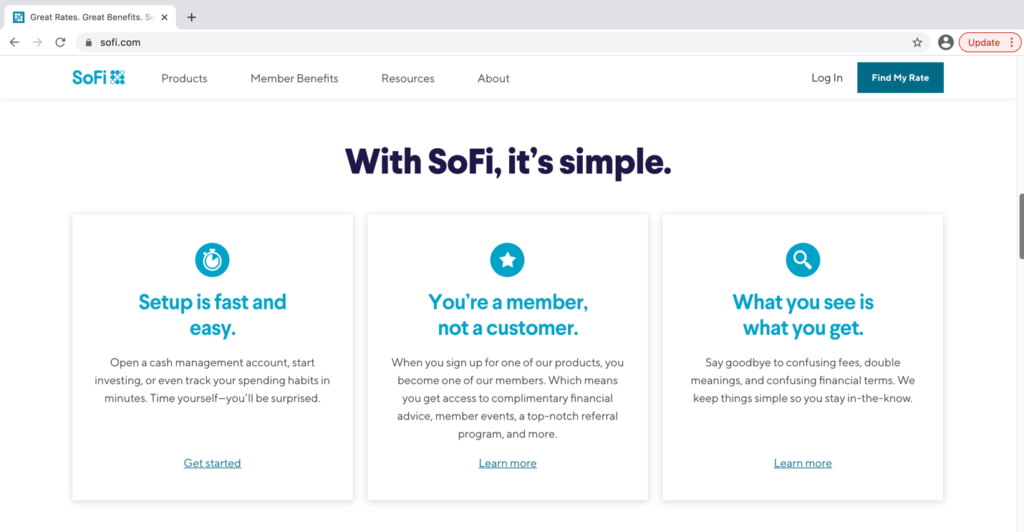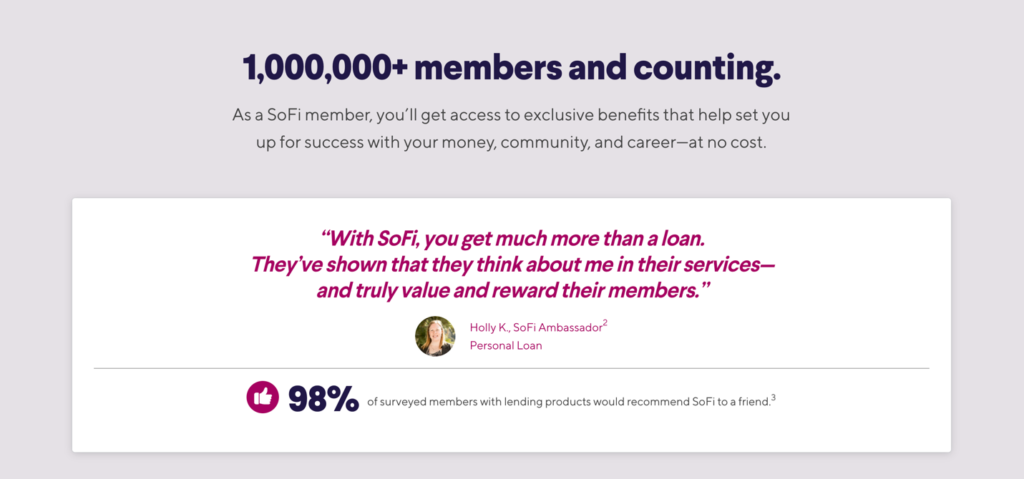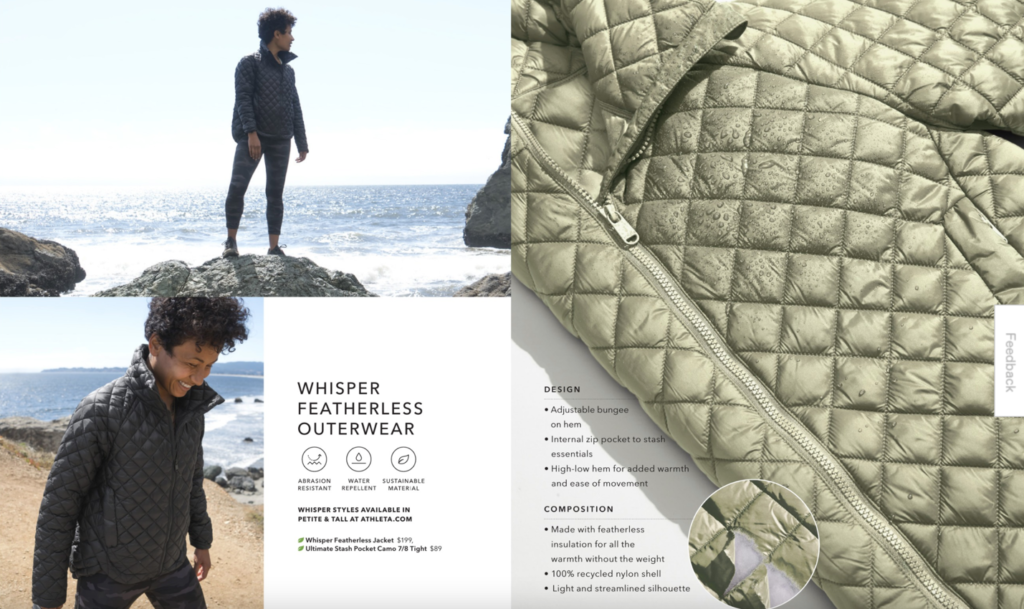Part 1: 3 COPYWRITING FORMULAS

I know. “Copywriting” and “formulas” sound like they don’t even belong in the same sentence, let alone the same concept. As someone who used to enjoy English class and all but cry their way through chemistry, I fully support words and numbers playing in separate sandboxes. But in marketing and advertising, there are in fact copy formulas you can use to disrupt and drive consumers to buy what you sell.
The best formulas are easily remembered, quickly mastered, and can be used by novice and experienced writers alike. Knowing them can help you create copy that’s twice as effective, in about half the time. Formulas can also offer a boost when writer’s block sets in or help validate your work when you need a final gut check. Oh, and the reason they’re called formulas? Because they work!
There are a ton of copywriting formulas floating around out there. But here we’ll focus on three that I’ve found to be most effective and easiest to use.
FORMULA #1: AIDA
Attention, Interest, Desire, Action
Best for:
Persuasive writing for both print and digital channels, from direct mail to blogs to landing pages
How it works:
Perhaps the most well-known, time-tested copy formula, AIDA suggests that consumers move through a series of steps (in a particular order) when making purchase decisions. Copy should first grab the reader’s attention, pique their interest, create a desire to own what’s being sold, and finally, drive the reader to take action or make a purchase.
Why it works:
AIDA helps you focus on the most important and influential part of any advertising message: the headline. It’s the first thing your reader sees, and if it’s no good, the headline might be the only thing they see. For headline writing tips, check out this post.
Example:
Apple consistently applies the AIDA formula to their messaging, as presented in their email below. The headline, though a little lengthy, grabs attention and makes you want to know more. The copy below the image combines a series of quick-hitting phrases to keep you interested, and simple calls to action direct you where to purchase the product.

FORMULA #2: THE FOUR Cs
Clear, Concise, Compelling, Credible
Best for:
Everything, from headlines to tweets to sales messaging
How it works:
The process is as simple as its name. As you craft your message, ask yourself these four questions:
- Is it Clear? Is there any way it could be misinterpreted?
- Is it Concise? Did I tell the story in the fewest possible words?
- Is it Compelling? Does it address the reader’s needs, concerns or desires?
- Is it Credible? Did I leverage a money-back guarantee, customer testimonial or other content to help build the reader’s trust?
Why it works:
It strengthens your proofreading process. The 4 Cs function as more of a checklist than a formula, so as long as no “C” is missing, weak or vague, you can publish your content with confidence.
Example:
SoFi, a personal finance company, checks all four boxes on their homepage. The copy clearly and concisely explains their setup process, member benefits and stance on transparency. The section below it establishes credibility by sharing impressive stats and a powerful customer testimonial.


FORMULA #3: FAB
Features, Advantages, Benefits
Best for:
Body copy and product descriptions (in print or on your website)
How it works:
Let’s say you’ve hooked your reader with a solid headline and great storytelling. Now they want to know more. The FAB formula helps you give them that additional info they’re seeking, which are the features (what your product can do), advantages (why it’s helpful) and benefits (what it means for the person reading).
Why it works:
FAB zeroes in on what customers care about most: What’s in it for them? There are millions of products and services out there, so they want to know why yours is special. How it will make their life, their home, their workout, their job, their experience… better.
Example:
Athleta applies FAB to product descriptions on their website and also in print. The example below is from their January 2021 catalog, and lands in the second half of the book after the reader is presented with great storytelling up front. Rather than listing every detail of the Whisper Featherless Jacket, they add value and meaning to a few features by explaining the benefits (i.e. “ease of movement” and “all the warmth without the weight”).

Remember, the copywriting formulas above are just a few of many. And writers might not always need formulas. But for the days when you’re looking for a quick boost or you’re just plain stuck, it never hurts to have these methods in your back pocket.
For more copywriting tips or formulas (the non-numeric kind, that is), give me a shout at kelseyf@jschmid.com
Tags: copy formulas, Copywriting, copywriting tips, formulas, Kelsey Finley, persuasive copy, strategic copywriting, web copywriting
